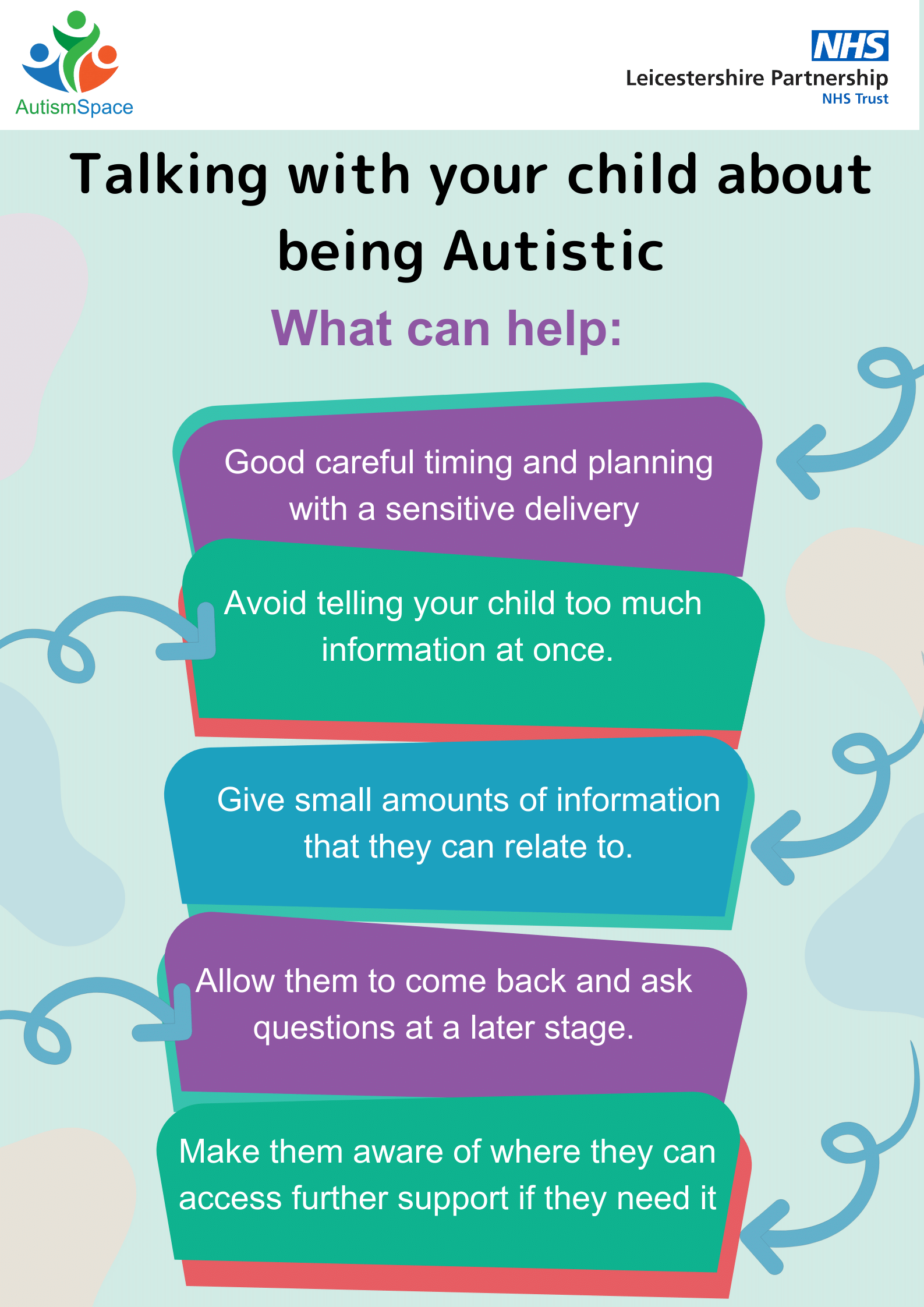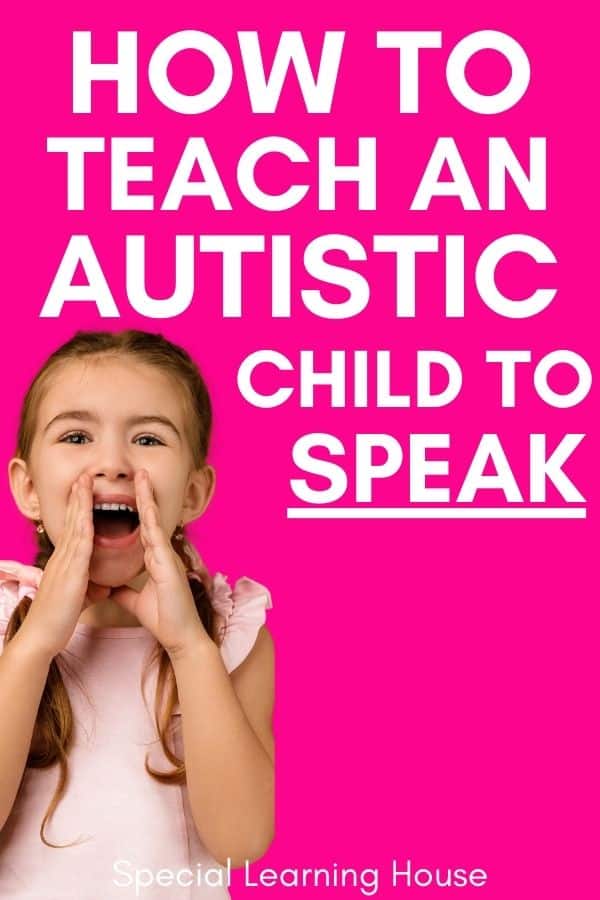Helping an autistic baby to speak involves patience and tailored strategies. Each child is unique, and understanding their needs is essential.
Early speech development can be challenging but rewarding for both parents and their children. Autism affects communication skills, making it difficult for some children to express themselves verbally. Encouraging speech in autistic babies requires a gentle approach and supportive environment.
Parents often seek ways to boost their child’s language skills. It’s important to focus on the child’s interests and strengths. Simple, engaging activities can make a difference. Speech therapy and interactive play are effective methods to explore. Understanding the child’s sensory preferences aids in communication. A consistent routine helps in building language skills. The journey requires dedication, but the progress is truly inspiring. With the right support, autistic babies can enhance their ability to speak over time.
Early Signs And Symptoms
Understanding early signs and symptoms of autism is crucial for parents. These signs often appear in communication and speech development. Recognizing these symptoms helps in providing timely support. Early intervention can significantly enhance speech outcomes for autistic babies.
Recognizing Communication Challenges
Communication challenges are common in autistic children. They might not respond to their name. Eye contact might be limited. Some might prefer solitary play. Babbling might be absent or reduced. Gestures like pointing might be missing. These signs indicate potential communication difficulties.
Identifying Speech Delays
Speech delays are another early sign. Autistic babies might not speak at expected milestones. Words might be few or absent by certain ages. They might repeat phrases or words. Understanding simple instructions might be tough. Vocabulary might be limited compared to peers. Identifying these delays is key in seeking help.

Credit: www.leicspart.nhs.uk
Creating A Supportive Environment
Creating a supportive environment helps an autistic baby learn to speak. Use simple words and repeat them often. Encourage communication through play and songs.
Creating a supportive environment is crucial when helping an autistic baby to speak. The right surroundings can foster communication and encourage speech development. You might wonder, how can you transform your home into a speech-friendly space? Let’s dive into practical strategies that can make a difference.
Minimizing Distractions
A quiet, focused environment is key for your child. Limit background noise by turning off the TV and keeping toys that make sounds in another room. Consider creating a designated speech area where distractions are minimized, allowing your child to concentrate on interactions and learning new words. Think about the lighting and visual stimuli in the room. Too many bright colors or clutter can overwhelm your child. Keep the area tidy and visually calm to help your child focus better.
Encouraging Interaction
Interactive play is a powerful tool for speech development. Engage in activities that require your child to use their voice. Simple games like peek-a-boo or hide and seek can prompt your child to communicate, even if it’s just babbling or making sounds. Be present and responsive during playtime. When your child makes a sound or tries to communicate, respond enthusiastically. This not only encourages more attempts but also shows your child that their efforts are valued. Have you noticed your child responds better to certain toys or activities? Use these as opportunities to encourage more vocal interaction. Tailor your approach to what your child enjoys, making learning a natural and enjoyable part of your day. Creating a supportive environment isn’t about perfection; it’s about understanding and adapting to your child’s needs. How can you make small changes today to foster better communication with your child?
Utilizing Visual Aids
Visual aids can significantly support language development in autistic babies. Pictures, videos, and gestures provide clear communication cues. These tools create engaging environments, encouraging vocalization and interaction.
Helping an autistic baby to speak can be a journey filled with patience, love, and creativity. One effective approach is utilizing visual aids. Visual aids provide a bridge between understanding and expression. They can transform abstract concepts into tangible images, making communication easier for your baby. These tools can be a game-changer, offering clarity and fostering interaction in a world that’s often overwhelming for little ones.
Incorporating Picture Cards
Picture cards are a simple yet powerful tool. They allow your baby to associate images with words. For example, showing a picture of a cup while saying “cup” helps them connect the visual with the verbal. Create a collection of everyday items that your baby encounters. Use them during meals, playtime, or outings. You might even find that your baby starts pointing to the cards to indicate their needs or interests. Keep the cards accessible and encourage your baby to use them daily. This consistent exposure can gradually lead to verbal communication, turning understanding into spoken words.
Using Sign Language
Sign language is another valuable visual aid. It offers a way for babies to express themselves before they master spoken language. Simple signs for words like “more,” “eat,” or “play” can empower your baby to communicate their needs effectively. Start with basic signs that are relevant to your baby’s daily routine. Make it a fun and interactive learning experience. You might notice that as your baby gains confidence in signing, their ability to understand and eventually speak improves. Consider learning together with your baby. This shared experience not only enriches their learning but also strengthens your bond. Have you ever wondered how empowering it could be for your baby to communicate through signs? Visual aids offer more than just communication; they provide a sense of achievement and confidence. They open doors to a world where your baby can express thoughts, feelings, and desires.
Engaging In Interactive Play
Interactive play can help autistic babies develop speech skills. Simple games encourage communication and understanding. Use toys and sounds to engage them in dialogue.
Engaging in interactive play can be a powerful tool in helping an autistic baby to speak. Play is a natural way for children to learn and develop their communication skills. Through thoughtful play, you can create a supportive environment that encourages speech and language development.
Choosing Appropriate Toys
Select toys that stimulate curiosity and encourage verbal interaction. Simple toys like blocks, musical instruments, or picture books can open up opportunities for speech. Choose toys that require your child to make choices or ask for help, prompting them to use words or sounds. Consider toys that mimic real-life activities, like kitchen sets or doctor kits. These can help your child learn everyday vocabulary and phrases. Toys that light up or make sounds when manipulated can also capture attention and prompt vocal responses.
Fostering Social Skills
Interactive play is not just about toys; it’s about sharing experiences. Engage your child in play that requires turn-taking, which can teach patience and dialogue. Games like peek-a-boo or hide-and-seek can enhance their anticipation and response skills. Encourage group play with siblings or other children. This will expose your child to new vocabulary and different ways of expressing themselves. Narrate the play activities, describing actions and emotions, to model language use in social contexts. Have you considered how your own reactions influence your child’s speech development? Celebrating their efforts, even the smallest attempts at speech, can motivate them to keep trying. Your enthusiasm and encouragement can create a positive feedback loop, reinforcing their desire to communicate.
Implementing Speech Therapy
Implementing speech therapy can greatly assist autistic babies in developing communication skills. Speech therapy focuses on language development, articulation, and social communication. With professional guidance, parents can foster an environment that supports their child’s speech development. This structured approach helps children express themselves better, enhancing their daily interactions.
Finding Qualified Therapists
Finding the right therapist is crucial. Search for professionals with experience in autism. Check their credentials and reviews. Ensure they have a strong track record. Ask other parents for recommendations. Visit local clinics for consultations. Observe their interaction with your child. Make sure your child feels comfortable.
Setting Realistic Goals
Set achievable goals for your child’s speech progress. Discuss these goals with the therapist. Focus on short-term milestones. Celebrate small achievements. Adjust goals as needed based on progress. Maintain a positive and patient approach. Encourage your child consistently. Keep communication fun and engaging.

Credit: www.speciallearninghouse.com
Emphasizing Routine And Consistency
Establishing a predictable routine aids speech development in autistic babies. Regular activities create familiarity, encouraging vocalization. Consistency in daily interactions strengthens communication skills, fostering gradual language growth.
Helping an autistic baby learn to speak can feel like a challenging journey, but emphasizing routine and consistency can make a world of difference. Establishing a predictable environment provides comfort and security, which is crucial for their learning process. A structured routine helps them understand what’s expected, reducing anxiety and creating a conducive atmosphere for communication growth.
Establishing Daily Schedules
Creating a daily schedule involves mapping out regular activities at consistent times. This could include set times for meals, play, speech exercises, and rest. When your child knows what comes next, it can boost their confidence and willingness to engage. Imagine starting each day with a favorite song during breakfast, followed by a communication game. This repetition helps them associate certain activities with specific words or sounds. It turns everyday routines into learning opportunities.
Reinforcing Familiar Patterns
Once you’ve established a routine, reinforcing familiar patterns is key. Repetition solidifies understanding and helps your child anticipate and prepare for what comes next. This predictability can spark their interest in communication. Consider using simple phrases during routine tasks, like “time to eat” or “let’s play.” Consistent language helps them grasp the connection between words and actions. Seeing your commitment can motivate them to try speaking, imitating the words you use regularly. Have you noticed certain activities or routines that calm your child? These moments are perfect opportunities to introduce new words or sounds. By connecting speech with familiar patterns, you create a safe space for them to explore language.
Involving Family In Communication
Involving family in the communication journey of an autistic baby is crucial. It’s not just about teaching the child to speak but creating a supportive environment where everyone plays a part. When families work together, they can create a nurturing space that encourages the child to express themselves.
Training Family Members
Family members can become effective communication partners by learning specific techniques. Consider attending workshops or online courses focused on autism communication strategies. These resources often offer practical tips like using simple language or emphasizing non-verbal cues.
Imagine the joy of hearing your baby’s first words after everyone has been practicing patience and consistency. Encourage each family member to share their learning experiences and insights. This collaborative effort not only aids the child’s progress but strengthens family bonds.
Creating A Unified Approach
Consistency is key in helping an autistic baby develop communication skills. A unified approach means everyone is on the same page regarding techniques and goals. Set regular family meetings to discuss progress and adapt strategies as needed.
Have you considered creating a communication chart? A simple table with goals and methods can track progress visually, making it easier for everyone to stay aligned. You might find that a unified approach reduces confusion and enhances the child’s ability to understand and respond.
By involving family members and creating a cohesive strategy, you create a powerful support system for your autistic baby. What unique insights could your family bring to this journey? Everyone has something to offer, and collectively, you can make a significant impact.

Credit: parenting.firstcry.com
Celebrating Small Achievements
Celebrating small achievements in helping an autistic baby to speak is crucial. Every word spoken is a milestone. Each sound made is a step forward. This journey requires patience and understanding. Recognizing and celebrating these small wins motivates both the child and parents. It builds confidence and encourages further progress. Positive reinforcement plays a key role in this process.
Tracking Progress
Keep a record of your child’s speech attempts. Note each new sound or word. Tracking progress helps identify patterns and areas needing focus. Celebrate these small improvements regularly. Progress might seem slow, but each step is significant. Parents can use charts or journals for tracking. This visual representation boosts motivation.
Providing Positive Reinforcement
Positive reinforcement encourages more speech attempts. Praise your child for trying, even if unclear. Use smiles, claps, or a gentle hug. These actions show your child their effort is valued. Rewards can be simple, like extra playtime. Consistent positive feedback strengthens their confidence. It creates a supportive environment for learning to speak.
Frequently Asked Questions
At What Age Should An Autistic Child Speak?
Autistic children may begin speaking at different ages. Some might start around two, while others could take longer. Early intervention and therapy can support language development. It’s important to remember that each child is unique, and speech milestones can vary significantly.
How To Teach An Autistic 2 Year Old?
Use clear, simple language and visual aids. Establish a consistent routine. Encourage play with sensory toys. Celebrate small achievements. Engage in activities that match their interests.
Do Autistic Non-verbal Children Ever Speak?
Yes, some non-verbal autistic children do start speaking. Speech therapy and early intervention can help develop communication skills. Each child is unique, and progress varies. Patience and support from caregivers and professionals are essential for encouraging speech development.
At What Age Can Autism Be Treated?
Autism can be treated from early childhood. Intervention typically starts as early as age two. Early treatment improves communication and social skills. Tailored therapies help reduce symptoms. Consult professionals for personalized strategies. Early diagnosis and support are crucial.
Conclusion
Encouraging speech in autistic babies takes patience and love. Simple, daily interactions help. Speak clearly and often. Use gestures and expressions. Create a calm environment. Celebrate small achievements. Every child learns at their own pace. Keep communication fun and engaging.
Support from professionals can be valuable. Remember, progress might be slow, but every step matters. Your efforts can make a big difference. Stay positive and hopeful. Your baby will find their way to express. Keep nurturing and supporting their journey.
{ “@context”: “https://schema.org”, “@type”: “FAQPage”, “mainEntity”: [ { “@type”: “Question”, “name”: “At what age should an autistic child speak?”, “acceptedAnswer”: { “@type”: “Answer”, “text”: “Autistic children may begin speaking at different ages. Some might start around two, while others could take longer. Early intervention and therapy can support language development. It’s important to remember that each child is unique, and speech milestones can vary significantly.” } } , { “@type”: “Question”, “name”: “How to teach an autistic 2 year old?”, “acceptedAnswer”: { “@type”: “Answer”, “text”: “Use clear, simple language and visual aids. Establish a consistent routine. Encourage play with sensory toys. Celebrate small achievements. Engage in activities that match their interests.” } } , { “@type”: “Question”, “name”: “Do autistic non-verbal children ever speak?”, “acceptedAnswer”: { “@type”: “Answer”, “text”: “Yes, some non-verbal autistic children do start speaking. Speech therapy and early intervention can help develop communication skills. Each child is unique, and progress varies. Patience and support from caregivers and professionals are essential for encouraging speech development.” } } , { “@type”: “Question”, “name”: “At what age can autism be treated?”, “acceptedAnswer”: { “@type”: “Answer”, “text”: “Autism can be treated from early childhood. Intervention typically starts as early as age two. Early treatment improves communication and social skills. Tailored therapies help reduce symptoms. Consult professionals for personalized strategies. Early diagnosis and support are crucial.” } } ] }
